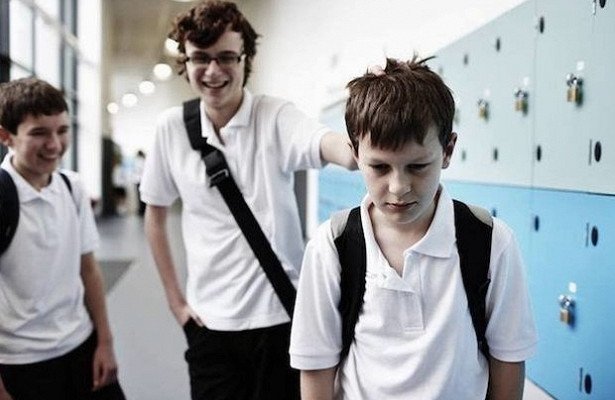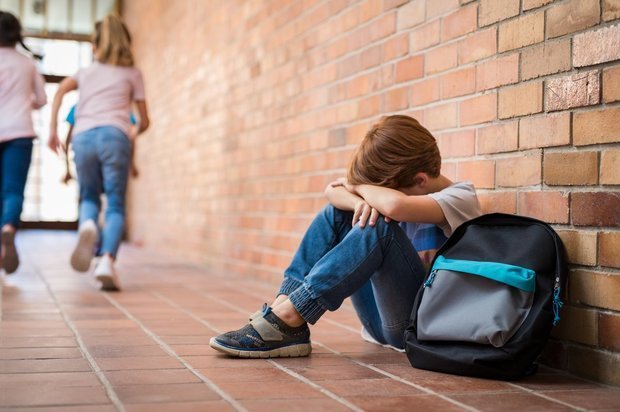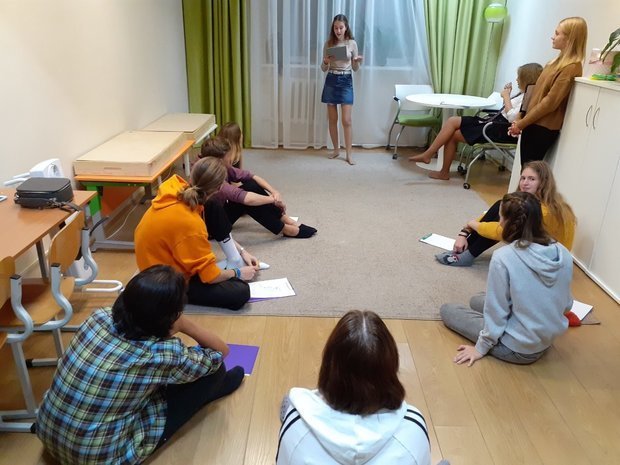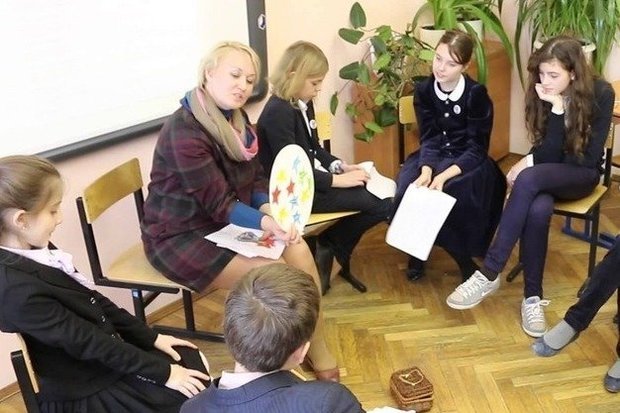Nikita Lavreshkin: ‘Bullying has not gone away but begun to flourish online in the form of cyberbullying’
The psychologist answered 10 questions about bullying at school and cyberbullying
“Bullying is a very urgent problem that was in our childhood and is still there. It's just that with the change of the world, the forms of bullying also change," warns psychologist Nikita Lavreshkin. Senior lecturer of the Department of Legal Psychology and Law at the Faculty of Legal Psychology of the Moscow State Psychological and Pedagogical University (MGPPU) in the author's column for Realnoe Vremya tells the readers how to minimise the risks for a child to become a victim of bullying or buller and what parents can do for this.
- What can be attributed to bullying? Bullying involves violence by one person or a group of people. It is usually of a long-term nature, it is not a one-time action. Such harassment can be both physical — when they start beating, tripping, and psychological, moral — ranging from insults to spreading rumours and ignoring with a boycott. In a word, more or less prolonged violence — both physical and mental — can be attributed to bullying.
- How common is bullying nowadays? Bullying is a very urgent problem, which was such as in our childhood, so it is now. It's just that with the change of the world, the forms of bullying also change. In addition to that bullying has not disappeared from the usual environment — schools, collectives, it began to flourish online in the form of cyberbullying. There are becoming more forms of bullying. At the same time, more attention has been paid to this problem, schools try to work through difficult situations, and this reduces a certain severity of the issue. Still, it very much depends on the school — in some, where the work is carried out, the manifestations of bullying are minimal, but even in such cases there is a risk that a student encounters it outside of school — for example, on the Internet. I've worked at several schools myself, so I know what I'm talking about.
 Photo: ipne.ws
Photo: ipne.ws - Cyberbullying is the possibility of harassment 24/7. Bullying, in addition to real life, often also flows into the Internet. There, not only the person himself, but also the product of his activity — various videos, creativity, posts and so on — can be bullied. Various insults can be continuously sent to the victim of bullying's page 24/7. Besides, there are many thematic communities, which, of course, they are trying to fight, but so far not so successfully. There are public groups, like “Podslushano”, where they begin to post photos that are unpleasant to a person, or write nasty things about him or her. Unfortunately, online bullying is beginning to complement the offline environment. Perhaps, due to that a lot of aggression has flowed into the Internet, physical violence as a manifestation of bullying has become less.
- Buller's psychology. Even if we judge by the gender of the person engaged in bullying, we will not see much difference. It's just that boys usually show more physical aggression, and girls — verbal and indirect, but this does not always work that way. It is important to understand that there are very different motives and needs behind the aggressor's behaviour. It is necessary not to stigmatise a person who bullies that he is difficult or deviant, but to understand that at this moment, when he is engaged in bullying, he has a deficit in terms of meeting his various needs, for example, attention, self-realisation, security. At this moment, a buller himself, most likely, is also not living very well and he himself has a difficult life situation related to family, studies and other factors. Besides, perhaps he is being stigmatised and at school he is treated as a some kind of wrong, bad, although he might be happy to get better and behave differently. Thus, it is quite difficult to talk about a single portrait of a person engaged in bullying, but, of course, certain patterns can be identified. These are most often people who have difficulties in their family, studies, there may be problems in self-regulation (for example, the cerebral cortex is not sufficiently developed so that he can stop at the moment when he wants to hit or insult). But bullying can also come from a person who has no obvious problems. At the same time, he may have a certain feeling of insecurity inside and it is important for him to demonstrate his strength. Or he may lack attention, acceptance from peers. A person engaged in bullying often waits for a certain reaction from his victim. And then everything is very individual. If you give this person what he wants, he will continue, and if you do not give it, he may stop. But it all doesn't work in such a one-line way.
 Photo: britishcouncil.org
Photo: britishcouncil.org - Who is more likely to become a victim of bullying? These are more often people with certain features in appearance, behaviour, speech, and so on. New students who have recently come to a new class very often become victims of bullying. There are some patterns, but everything may not be so linear. It happens that a teenager has a conflict with an informal leader in the team, and the latter begins to show bullying in his direction, and the rest cathc up. As a result, the teenager becomes the object of group harassment, although the victim of bullying does not have any distinctive features from other guys. But usually, the victims of bullying in teenage collectives are the teenagers who stand out for something — in appearance, speech, or stand out because they are not integrated into the team, and turn out to be a scapegoat. If we talk about cyberbullying, then in this case the harassment does not always come from familiar people. Many teenagers post various videos, photos, and posts on social networks that are available to a wide range of readers. And they become objects of bullying by complete strangers. That is, they can become victims of bullying both from the class and on the Internet if they posted some object of their creativity that caused an ambiguous reaction.
- What should a victim of bullying do? There is a big problem when teenagers are afraid to seek help from adults and, in principle, do not believe that they can really get help. It is first of all important for a teenager to turn to an adult who will be on his side, support, protect. If there is a good contact with the class teacher, social pedagogue, school psychologist — first of all, they need to contact them. In some situations, parents cannot give enough support and even begin to scold the victim of bullying themselves, thereby worsening the situation. Or they can immediately go to investigate without listening to their child, which can only aggravate the situation and worsen relations within the team. It happens that bullying affects self-esteem, emotional state. In this case, the support of a psychologist, the support of loved ones is important. In crisis situations, you can also contact various hotlines for help.
- What can reduce the likelihood of becoming a victim of bullying? In general, various educational classes, trainings aimed at the development of social intelligence, reduce the risk that a person will become a victim of bullying. It would be useful for all teenagers to attend communicative, socio-psychological trainings, where they can learn to stand their ground, get along, resolve conflicts. This will be the best preventive and supportive method.
 Photo: detkityumen.ru
Photo: detkityumen.ru - How can a parent understand that a child has become a victim of bullying? If a certain close interaction is not established between the parent and the child, when the child comes and tells everything himself, there are certain indicators that may indicate that the student is being bullied. First of all, it is a long-term emotional depression. The child is being sad, withdrawn. Teh fact that he prefers to avoid classmates will be seen rather by the class teacher than by the parent. Often, a child exposed to bullying avoids mass events at school and also often gets sick or feigns illness in order to stay at home, or really feels bad. If physical violence occurs, you can see bruises, beatings. The cyberbullying indicator is a child's reaction to communication on the Internet. It is important to observe whether the mood changes after this, whether an emotional deterioration begins. Aggressive behaviour can also indicate bullying — when a child begins to cut himself. Or he posts on social networks about death, his pain, experiences, relevant thematic audio recordings, pictures.
- Do drastic measures like changing schools often need to be taken? The situation with bullying can almost always be resolved without resorting to drastic measures, such as changing schools. The only question is how much the school administration is interested in this and how much the school has enough resources for this, how many and what kind of social workers and psychologists work there. Often, due to bureaucracy, the workload of teachers-psychologists is very large, and there are 500 or even more students per school psychologist. And there is simply no physical possibility to work through all situations. And some cases of bullying drag on until graduation. If everything is so hopeless, then you can transfer the child to another school, where they work more and more effectively with bullying problems. But there is always a risk that a similar scenario will be repeated in another team. He'll be a new one. Besides, if he already has vulnerabilities, it is important to work them out. If we transfer a child from one school to another, the symptom is removed, but it is not necessarily that the child does not face bullying again. So first of all, it is worth trying to solve the problem locally. In extreme cases, transfer to another school is necessary. There are situations when parents initiate a school change several times, but the problem repeats. I do not want to say that the victim of bullying is to blame himself, but in this case, it is worth looking for the crux of the problem and working through this moment.
- What can be done at the systemic level to minimise bullying in schools? Definitely — to increase the number of vacancies of social educators and psychologists. A psychologist should have the opportunity to study individually at least once a week, if a student has a problem, and conduct an individual consultation. It is important that the psychologist has time allocated for team classes to consolidate the class, develop social skills. And to have the opportuntiy to carry out constant diagnostics, monitoring of the situation, processing of results. It is important to work in the system. The psychologist does not always work in cooperation with other specialists, school administration. It is important that all parties are aware of each other's actions, can bring problems to a consultation and discuss them together. Psychologists need a certain freedom of action. In some schools this already exists — a psychologist can initiate work, including with teachers, initiate psychohygienic activity, change the environment at school, make it more psychologically favourable. But often psychologists are afraid of the pressure of the administration, and they are not allowed this kind of democracy. Teamwork is needed so that the school principal listens to the forecasts and recommendations of a psychologist, and classroom teachers pay attention to the interaction and individual characteristics of students, and not only the results of studies, try to help the child, even if his behaviour is deviant. It is important that psychologists have the opportunity to work with parents, give feedback, and conduct educational classes. It is simply necessary to engage in psychological education in relation to parents. Parents should understand age psychology.
 Photo: pvsm.ru
Photo: pvsm.ru
As I wrote above, the behaviour of a person who is engaged in bullying comes from normal human needs — we all need security, attention. We need educational classes and resources so that children can meet these basic needs in a social way. In those schools where more opportunities have been created in terms of clubs, sections — for a person who could go to beat someone up so that more attention is paid to him, more opportunities have been created to get attention and acceptance from peers in other ways. For example, to go to some kind of a club according to one's liking and interests and self-actualise there. Various educational activities aimed at ensuring that children can communicate better with each other, talk about their feelings, so that they can better regulate themselves, find ways to cope with themselves, their stress, also help. Children, teenagers — they often have many different physiological and psychological changes, and manifestations of aggression are quite normal. It is normal that a person experiences anger, irritation. But one can show it by beating someone, or one can — in another direction, for example, in a martial arts club. Another good practice is when psychology classes are introduced into the school curriculum. This is still a fairly rare phenomenon, which is optional in some places. But in any case, such classes are a very big resource. When children begin to understand themselves, other people, boundaries, interaction, it has a very positive effect on the atmosphere at school.
It is important for parents to work on themselves. It is a well-known rule when on an airplane in an emergency, it is recommended to put on your own mask first and then on the child. If parents work with their problems, strive to form a careful, accepting attitude towards the child, try to get along with him or her, respect his or her opinions and interests, then the risks that the child will engage in bullying or become its victim are greatly reduced. If possible, do not neglect the various psychological developmental classes that you can attend with your child.
Reference
The author's opinion may not coincide with the position of the editorial board of Realnoe Vremya.